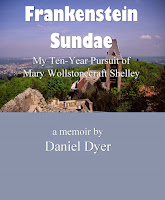Okay, I'm back at it! I finished the book about Frances (Fanny) Wright that had put me on Pause a couple of months ago, and so here we go ...
I went on hiatus when I was writing about the effort of Wright--a Scot, a social reformer, a committed opponent of American slavery--to enlist Mary's help in the late 1820s for her new little community of Nashoba, near Memphis, Tenn., where she was trying, in a small way, to do something to help recently freed slaves, slaves whom Wright had bought and would teach crafts and skills so that they would have a better chance to survive and even flourish.
And just what was
that plan? And what did Fanny want (hope for) from Mary? Well, it was a bold,
humanistic plan—a plan to begin the end of American slavery—and she elicited
help and support from Robert Dale Owen (whose father, recall, along with Robert
Dale himself, had begun New Harmony, the utopian community in Indiana) and from
Lafayette (yes, that Lafayette, who’d
been an important factor in our American Revolution half a lifetime earlier).
Lafayette had enjoyed, at the invitation of President James Monroe and
Congress, an elaborate tour of the former colonies from 1824–1825. And Fanny
Wright was then in America, promoting her anti-slavery program. And she and
Lafayette continued what David A. Clary, one of his biographers, called a strange, intense relationship.[i]
We will get back to that. The American visit in 1824 was not
Fanny Wright’s first trip to America. In 1818 she’d left Scotland, in company
with her sister, Camilla, embarking upon a two-year visit that would culminate
with her 1821 book, Views of Society and
Manners in America,[ii]
the book that first attracted Lafayette’s admiration. (She visited him in Paris in
1821.)
That book—Views—made
her something of a celebrity in the literary world (and elsewhere). Somehow in
all my research on Mary Shelley and Fanny Wright I’d neglected to read that
book, an oversight I corrected just recently.
Written in epistolary style—a series of letters to an unnamed
correspondent[iii]—the book commences with
a letter from New York City, a letter about her Atlantic crossing, addressed to
“My Dear Friend” (as are all the others) and ends in Washington, the capital
city, on April 1820. It is her twenty-seventh letter.
The letters tell the story of her journeys around the East
and Midwest and South, her observations about Americans and their customs, their
institutions, their attitudes, their language, and on and on. I was surprised to
see how much of it retains its original searing relevance. Much, too, seems,
well, “quaint” to my twenty-first-century eyes—and a little bit is uncomfortable
to read in 2016. (I read the book—slowly, slowly—between August 29 and October
4, 2016).
But the importance for the Mary Shelley story? It was during
Fanny Wright's first American sojourn that she saw slavery firsthand, and it was the issue
of slavery that later compelled her to form the community of Nashoba near
Memphis, Tennessee, the community to which she’d hoped to attract Mary. She
wanted Mary Shelley there, helping
her battle slavery.
[i] Adopted Son: Washington, Lafayette, and the Friendship That Saved the
Revolution (New York: Bantam): 442.
[ii] I read the edition edited
by Paul R. Baker (Harvard UP, 1963).
[iii] Baker identifies her as
an old friend, Rabina Craig Millar, with whom she’d once lodged; Millar had herself
spent a couple of years in America. “Introduction,” Views: x.



No comments:
Post a Comment